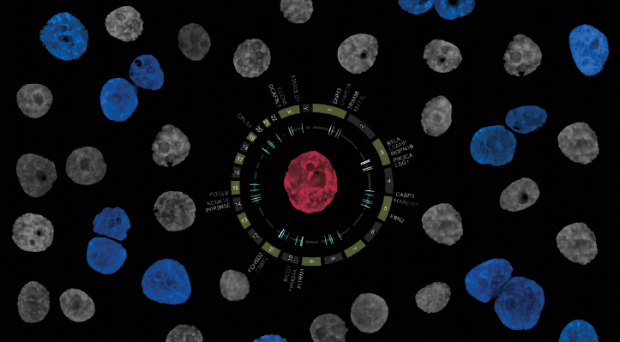
How do we infer anything about single-cell phenomena from bulk measurements? That is a problem that molecular biology has been facing for years, and while some practical answers have been offered, the simplest one is that we just don’t. Looking at the bulk population of cells is bound to give us a population-average response. While such information can still be useful, there are problems that simply cannot be addressed at population level.
This is what led to the eruption of the single-cell sequencing field about half a decade ago, and gave us some wonderful poster-child examples of how single-cell sequencing can inform us about cancer origins, evolution, and response to therapy.
While the most frequently discussed applications of single-cell sequencing are indeed from the field of cancer genomics, this is by no means the only area that might benefit from a single-cell level perspective. These technologies, which allow us to look at the DNA sequence or gene expression from the point of view of a single cell, can also be used in pre-implantation embryo testing, lineage tracing, or even – as recently demonstrated in Science by Sten Linnarsson and colleagues – for the discovery of new rare cell types.
In the near future, it might be possible to perform both genome and transcriptome sequencing on the same single cancer cell.
Nick Navin, MD Anderson, USA
Because two are better than one
Nick Navin, who is a Texas-based expert on single-cell sequencing, mentioned last year that one of the most exciting developments the field is waiting for is the ability to simultaneously look at both DNA and RNA from the same single cell. Two recent articles, published in Nature Biotechnology in January and Nature Methods this week, describe exactly this type of advance.
In January a group led by Alexander van Oudenaarden from Hubrecht Institute in the Netherlands described a new strategy that allows for the amplification of genomic DNA and mRNA at the same time, without the need for physical separation of these molecules before this process. The DNA and RNA acids are only separated once the amplification is done. Although the performance of this new method, dubbed DR-Seq, is comparable to existing protocols for DNA (MALBAC) and RNA (CEL-seq) sequencing, it is worth bearing in mind that with DR-Seq we get much more information out of the same experiment – and it is the type of information that other methods cannot provide.
This week, a group based mostly in Cambridge, UK, and led by Thierry Voet and Chris Ponting, reports another tool, G&T-seq, for parallel sequencing of single-cell genomes and transcriptomes (the clue is in the name!). Here, the DNA and RNA content of the cell is separated prior to amplification and subsequent sequencing. The whole system is robotized though, and so allows for performing whole-genome and whole-transcriptome sequencing of multiple cells at a time. The authors test the system on 220 mice and human cells to show that such combined analysis reveals insights that would not be possible to obtain from DNA or RNA sequencing alone. This is something that we knew from bulk studies already, but its demonstration on single cells adds another layer of understanding to these phenomena.
Plenty of space at the bottom
While single-cell technology is clearly moving toward increasingly thorough multiplexing, there is still plenty of room both for the improvement of existing DNA and RNA sequencing protocols, and for new ones, as the paucity of widely used methods for single-cell sequencing is palpable.
In March, Genome Biology published another tool that will hopefully expand the repertoire of useful methods in this area. The study led by Nick Navin described a new single-nucleus exome-sequencing technique called SNES. This approach delivers exome sequencing at the single-cell level with high coverage (96%) and low allelic drop-out rates. At the same time, it gives remarkably high detection rates for single nucleotide variants (92%) and indels (85%).
While I am going to leave it at that, I urge you to take a look at this comment from Peter Van Loo and Thierry Voet, who today ask: “Does SNES make sense?” and give an exhaustive answer. Cheeky spoiler: it does.
Comments